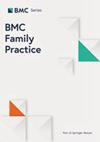与 COVID-19 期间患者教育相关的初级保健实践特点:38 个国家的 PRICOV-19 横向研究结果
IF 3.2
3区 医学
Q1 MEDICINE, GENERAL & INTERNAL
引用次数: 0
摘要
为应对 COVID-19 大流行,世界卫生组织提出了一系列重要建议,如教育活动,尤其是初级保健实践(PCPs)中的教育活动,这是该战略的关键组成部分。本文旨在研究 COVID-19 大流行期间初级保健实践中的教育活动,并找出 38 个国家中与这些实践相关的因素。根据 PRICOV-19 研究编制的初级保健医生自我报告问卷(n = 3638)中六个项目的回答,得出了 "患者教育(PE)"分数。对 3638 个病例进行了统计分析,剔除了 PE 分值缺失的初级保健医生。PE 评分的平均值为 2.55(SD = 0.68),中位数为 2.50(2.16 - 3.00),最高值为 4.00,各国之间的差异很大。在所有初级保健医生的特征中,以下因素可显著提高 PE 分值:支付系统类型(按人头付费系统或与服务收费相比的其他系统)、对慢性病患者的平均初级保健医生认知度以及对政府充分支持的认知度。本文提出的模型仍不完整,需要进一步研究,以确定有利于教育活动的其他配置要素。不过,研究结果已经凸显了某些杠杆作用,这些杠杆作用将使这种适合初级保健的教育方法得以发展。本文章由计算机程序翻译,如有差异,请以英文原文为准。
Characteristics of primary care practices associated with patient education during COVID-19: results of the cross-sectional PRICOV-19 study in 38 countries
In response to the COVID-19 pandemic, the World Health Organization established a number of key recommendations such as educational activities especially within primary care practices (PCPs) which are a key component of this strategy. This paper aims to examine the educational activities of PCPs during COVID-19 pandemic and to identify the factors associated with these practices across 38 countries. A "Patient Education (PE)" score was created based on responses to six items from the self-reported questionnaire among PCPs (n = 3638) compiled by the PRICOV-19 study. Statistical analyses were performed on 3638 cases, with PCPs with missing PE score values were excluded. The PE score features a mean of 2.55 (SD = 0.68) and a median of 2.50 (2.16 – 3.00), with a maximum of 4.00, and varies quite widely between countries. Among all PCPs characteristics, these factors significantly increase the PE score: the payment system type (with a capitation payment system or another system compared to the fee for service), the perception of average PCP with patients with chronic conditions and the perception of adequate governmental support. The model presented in this article is still incomplete and requires further investigation to identify other configuration elements favorable to educational activities. However, the results already highlight certain levers that will enable the development of this educational approach appropriate to primary care.
求助全文
通过发布文献求助,成功后即可免费获取论文全文。
去求助
来源期刊

BMC Family Practice
医学-医学:内科
CiteScore
3.20
自引率
0.00%
发文量
0
审稿时长
4-8 weeks
期刊介绍:
BMC Family Practice is an open access, peer-reviewed journal that considers articles on all aspects of primary health care research. The journal has a special focus on clinical decision making and management, continuing professional education, service utilization, needs and demand, and the organization and delivery of primary care and care in the community.
 求助内容:
求助内容: 应助结果提醒方式:
应助结果提醒方式:


